A Brief History of CPUs: 31 Awesome Years of x86
AMD Am386
If the Am286 represents AMD's first punch thrown in the x86 bout, the AM386 was the uppercut that followed. Released in 1991, the AM386 was another carbon-copy of Intel's 386 CPU, and once again it came clocked faster than Intel's own silicon. It also came with a marketing edge as the first processor to come adorned with Microsoft's "Windows Compatible" logo, a move The New York Times described as "clearly intended to add credibility to [AMD]'s clones of Intel's microprocessors."
Intel did its best to prevent AMD from selling its new processor, alleging that the x86 agreement the two signed only applied to 80286 and previous processors (sound familiar?). AMD won the ensuing court battle, and though Intel had already released its 486 CPU, the Am386 offered near the same performance for much less. The flurry of sales that followed solidified AMD as a true competitor to Intel.
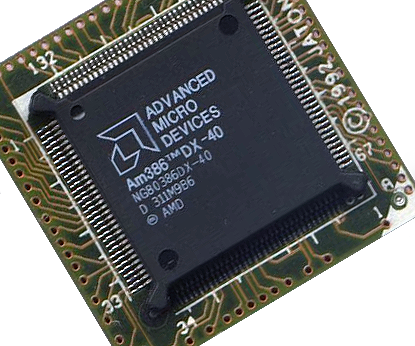
(Image Credit: hattix.co.uk)
Date Released: 1991
Clockspeed: 12MHz - 40MHz
Did you know?
The Am386 was ready for release before 1991, but was tied up in court due to a dispute over AMD's x86 license, which Intel claimed over covered the 80286 design.
Cyrix Cx486
Cyrix started off by producing math coprocessors for 286 and 386 systems in 1988, and in 1992, the company released its first x86 CPUs, the 486SLC and 486DLC. While the name might suggest otherwise, both of these were pin-compatible with the 386SX/DX, offering 386 platform owners an attractive upgrade option.
Manufactured by Texas Instruments, Cyrix's 486 series didn't come with a math coprocessor, though one could be added. Throughout its lifespan, the Cx486 series would come with anywhere between 1KB and 8KB of L1 cache and ramp as high as 100MHz.
The biggest gaming news, reviews and hardware deals
Keep up to date with the most important stories and the best deals, as picked by the PC Gamer team.
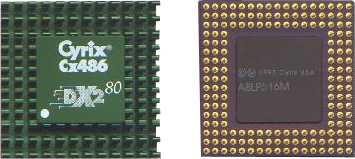
(Image Credit: cpu-museum.de)
Did you know?
Intel Pentium
Now in its fifth generation, Intel's Pentium processor brought the x86 architecture to new heights, as well as brought along a new naming scheme. Unable to patent numbers, Intel avoiding dubbing its newest chip the 586.
The Pentium introduced several improvements designed to address the performance bottlenecks of previous processors. Chief among them was a 64-bit wide date bus, two execution units, a much improved floating point unit (FPU), and faster clockspeeds. Intel's Pentium processor launched at 60MHz, but it didn't take long for faster chips to follow before it eventually topped out a 233MHz. During its lifespan, the Pentium also shrunk from a 0.8-micron manufacturing process to 0.35-microns and increased its transistor count from 3.1 million to 4.5 million.
In 1996, Intel began selling Pentium MMX processors. The MMX instruction set added additional registers to the architecture and were designed to give multimedia and communications applications a boost.
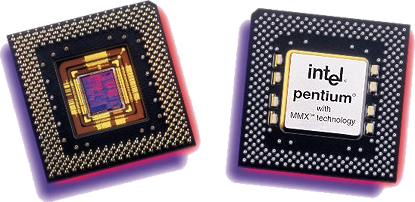
(Image Credit: Microprocessor.sscc.ru)
Date Released : 1993
Clockspeed: 60MHz - 233MHz
Did you know?
AMD Am486
The last clone in the true Clone Wars, AMD's Am486 debuted almost a full four years after Intel's 486 came out, and one month after the Pentium. To compete with the existing 486 chip, AMD undercut the competition by selling its version for less, while clocking it higher than Intel's 486. Some of AMD's faster 66MHz chips even gave Intel's newly released Pentium a run for its money.
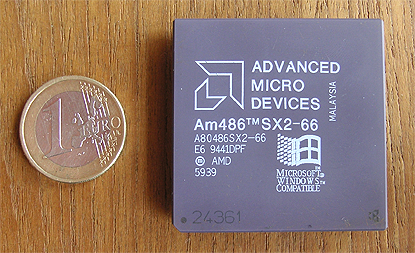
(Image Credit: liafa.jusseu.fr)
Did you know?
Intel Pentium Pro
Despite the minor nomenclature update, the Pentium Pro represented a pretty significant update over the original Pentium, bringing with it a new microarchitecture rather than just a set of minor enhancements. The Pro added another million transistors to its die (5.5 million), but more importantly was the addition of its L2 cache, 256KB to start and later up to 1MB. While not yet integrated into the processor core itself, the Pentium Pro's L2 cache still ran at the same clockspeed as the CPU, anywhere from 150MHz to 200MHz.
But while the Pentium Pro's L2 cache gave it an advantage, it also presented problems for the chip. Putting the cache on a separate die introduced manufacturing defects that led to lower yields, and ultimately higher prices. This might have been okay, had it not been for the fact that the Pentium Pro shined brightest on 32-bit OSes when 16-bit still reigned supreme.
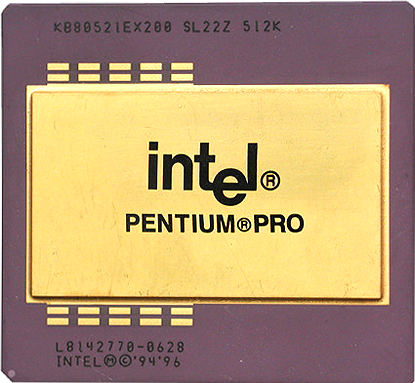
(Image Credit: Tomshardware.com)
Date Released : 1995
Clockspeed: 150MHz - 200MHz
Did you know?
Cyrix Cx5x86
Still a relative newcomer to the x86 market, Cyrix proved it wasn't a one-hit wonder by following up the Cx486 series with its Cx5x86. And once again Cyrix preyed on end-users looking for a drop-in replacement to their existing setup by making the Cx5x86 compatible with 486 Socket 3 motherboards. The same couldn't be said for Intel's Pentium chip, giving Cyrix a leg up in this respect.
Stability issues forced Cyrix to disable some of the features it touted for its new series, including branch prediction and other performance enhancements. However,the Cx5x86's time on the market ended prematurely not because of design issues, but because Cyrix didn't want the chip cutting into sales of its 6x86 chip, which was released just six months after the 5x86.
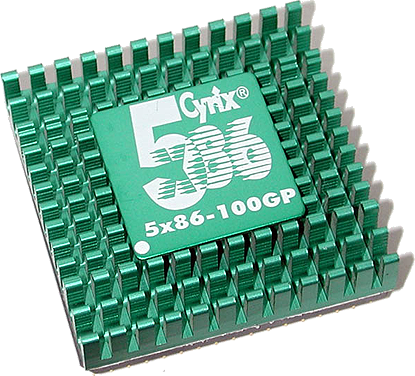
(Image Credit: cpu-world.com)
Date Released: 1995
Clockspeed: 100MHz - 133MHz
Did you know?
Cyrix rated the speeds of its chips rather liberally, and very few of the Cx5x86 processors actually ran at 133MHz.

